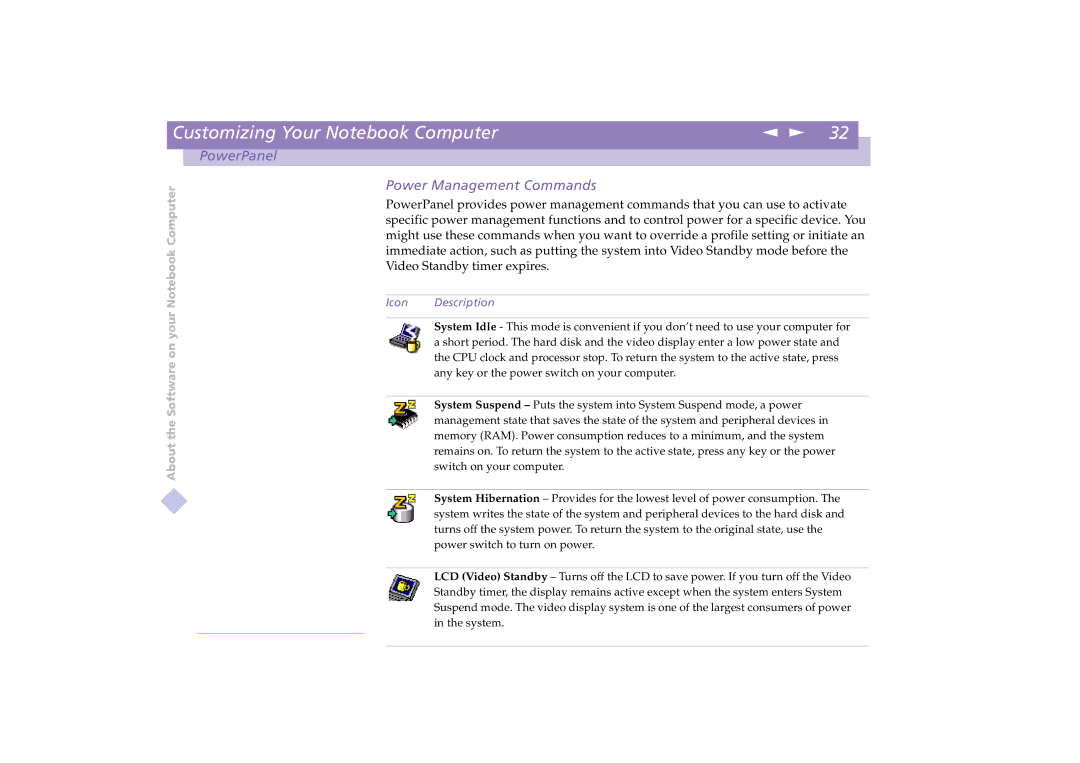
| Customizing Your Notebook Computer | n N | 32 |
|
| ||
|
|
|
|
|
|
|
|
| PowerPanel |
|
|
|
|
| |
Computer |
| Power Management Commands |
|
|
|
| |
| PowerPanel provides power management commands that you can use to activate |
| |||||
|
|
| |||||
|
| specific power management functions and to control power for a specific device. You |
| ||||
|
| might use these commands when you want to override a profile setting or initiate an |
| ||||
Notebook |
| immediate action, such as putting the system into Video Standby mode before the |
| ||||
| Icon | Description |
|
|
|
| |
|
| Video Standby timer expires. |
|
|
|
| |
your |
|
|
|
|
|
|
|
|
| System Idle - This mode is convenient if you don’t need to use your computer for |
| ||||
|
|
|
| ||||
on |
|
| a short period. The hard disk and the video display enter a low power state and |
| |||
|
| the CPU clock and processor stop. To return the system to the active state, press |
| ||||
Software |
|
|
| ||||
|
| any key or the power switch on your computer. |
|
|
|
| |
|
|
|
|
|
|
| |
|
|
|
|
|
|
| |
|
|
| System Suspend – Puts the system into System Suspend mode, a power |
|
|
| |
the |
|
| management state that saves the state of the system and peripheral devices in |
|
|
| |
|
| memory (RAM). Power consumption reduces to a minimum, and the system |
|
|
| ||
About |
|
| remains on. To return the system to the active state, press any key or the power |
| |||
|
|
|
| ||||
switch on your computer.
System Hibernation – Provides for the lowest level of power consumption. The system writes the state of the system and peripheral devices to the hard disk and turns off the system power. To return the system to the original state, use the power switch to turn on power.
LCD (Video) Standby – Turns off the LCD to save power. If you turn off the Video Standby timer, the display remains active except when the system enters System Suspend mode. The video display system is one of the largest consumers of power in the system.
